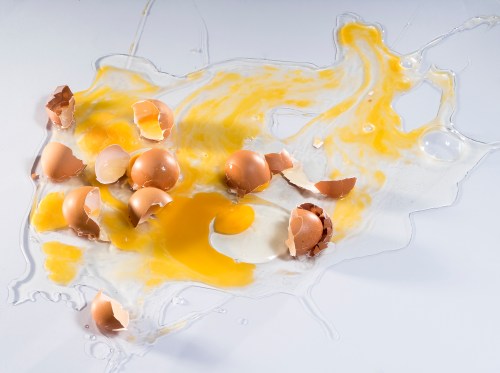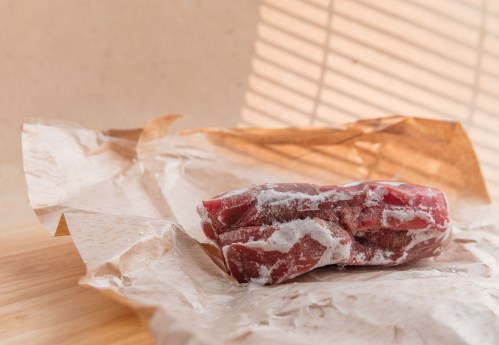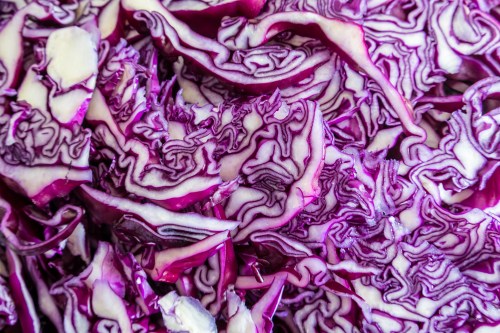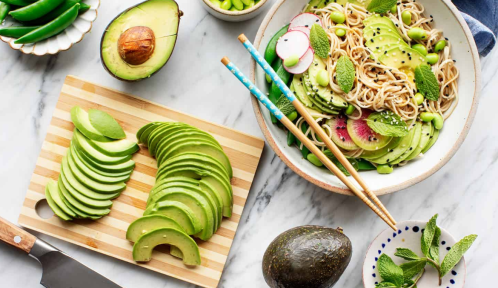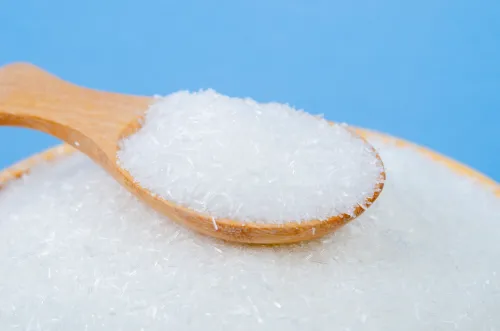Most people have a love-hate relationship with eggs right now. The breakfast staple is hard to find at many stores but, even when you manage to track a carton down, the sky-high prices are enough to make even the most devoted egg fan rethink their choices.
Data from the U. S. Department of Agriculture (USDA) shows a clear uptick in prices over time, with wholesale prices (what the store pays egg suppliers) in New York jumping 52 cents to $7.24 per dozen in December alone. In California, a dozen eggs will now set you back almost $9. Exact prices vary by location, but a USDA report from this week shows that egg prices are continuing to rise. With bird flu continuing to swirl in flocks, you can expect those prices to stay up for a while.
If you like to have your eggs scrambled, boiled, or fried, you may decide to buck up and pay more for a dozen while being mindful of how often you eat them. But if you tend to use eggs in baking, it can be helpful to know there are other options that give you the same taste and texture you’re after without blowing a ton of money. With that in mind, I tapped three dietitians for their advice on the best egg substitutes, plus how to use them so you don’t end up feeling deprived.
What is the best way to use egg substitutes?
Many substitutes aren’t designed to replace eggs that you’d eat as a main attraction on your plate. Instead, they’re best used in a baking recipe, although each has its own niche. “Eggs in recipes not only add protein and nutrients, but moisture and also act as a binder to hold other ingredients together as they cook or bake,” says Nancy Oliveira, RD, manager of nutrition and wellness services at Brigham and Women’s Hospital. “They also help to trap air which causes baked goods to rise and become fluffy.” In order to work, substitutions need to have similar properties, Oliveira says.
“Before you replace eggs in a recipe, you need to know what they were there for,” Christy Brissette, RD, dietitian and owner of 80 Twenty Nutrition. “Was it to help it rise when baking, to bind it together, or was it adding moisture?”
If you’re baking something that needs to rise, Brissette suggests adding ½ tsp of baking powder along with your egg-replacing ingredient, if it isn’t already in the recipe. “For baking, mashed banana, applesauce, mashed avocado, puréed pumpkin, pureed sweet potato or silken tofu help bind the ingredients together and add moisture,” she says. Just add ¼ cup to replace one large egg in a recipe. Brissette warns that some of these ingredients can alter the flavor of the final product, so choose your substitutions carefully.
If you need something to bind your ingredients together, Brissette suggests using ground flax seeds or whole chia seeds. Mix 1 tablespoon ground flax seeds or chia seeds with 3 tablespoons of water and let sit for five minutes. “This will form a gel that you can then add to your wet ingredients,” Brissette says, noting that this hack also adds more fiber to your dish. “These options work well in recipes for quickbreads such as pancakes, muffins, and zucchini bread,” she says. The flavor of this combination is neutral, Oliveira says, and “you get a boost of omega-3 fatty acids, too.”
In recipes like burgers or meatballs, the egg acts to bind the ingredients together so they don't fall apart, Brissette says. “If I don't have eggs on hand, I'll use oats, cooked rice, or breadcrumbs with a bit of water,” she says. “You can also sub in mashed sweet potato or mashed potato or squash to help it bind and add some moisture.”
Aquafaba—or the liquid that’s left over in a can of chickpeas—is a great option as a binder in baked goods or vegan mayonnaise, per Brissette. “You can even use it to replace egg whites in recipes like meringue and macaroons,” she says. “Just whip it up in a mixer with some cream of tartar for three to five minutes to form stiff peaks.” Aquafaba doesn’t contain a lot of nutrients but it’s easy and many people already have cans sitting around, Oliveira points out. “It’s great to repurpose the liquid that we would normally toss out,” she adds.
Overall, using egg swaps in your recipes may take a little trial and error. But, once you find one that works for you, it could end up saving money in the long run—and adding in extra nutrition in the process.
What are the best egg substitutes?
There are a lot of creative hacks for swapping out eggs in a recipe and each has its own special use in cooking. “The best substitute depends on the specific dish being prepared,” says Stephani Johnson, DCN, RDN, professor in the Department of Clinical and Preventive Nutrition Sciences at Rutgers University.
These are some of the biggies to keep in mind—and in your home:
- Mashed soft fruit, like banana, pumpkin purée, avocado, applesauce, or yogurt
- Soft tofu
- Ground flaxseeds or chia seeds mixed with water
- Vinegar and baking soda
- Aquafaba, or chickpea liquid
- Oats and water
- Cooked rice
- Bread crumbs and water
- Mashed potato or mashed sweet potato
- Commercial egg replacers (these are usually made from potato and tapioca starch with added leavening agents like baking soda, Johnson says)
- Mayonnaise (it contains egg, plus provides great moisture for baked goods)
How to get 12+ grams of protein elsewhere
Two eggs deliver about 12 grams of protein. And, if you’re limiting your egg use or skipping it entirely, it’s fair to wonder how else to get in that much protein. “There are many other ways to obtain 12 grams of protein beyond eating two eggs, including plant-based and alternative protein sources,” Johnson says.
Those include:
- 2 ounces of animal meat, ~14 grams of protein
- ⅔ cup Greek yogurt, 12 grams of protein
- 3 tablespoons of peanut butter, 12 grams of protein
- ½ cup cottage cheese, 13 grams of protein
- 1 ½ cups of milk, 12 grams of protein
Sign Up for Our Daily Newsletter
Get all the latest in wellness, trends, food, fitness, beauty, and more delivered right to your inbox.
Got it, you've been added to our email list.
